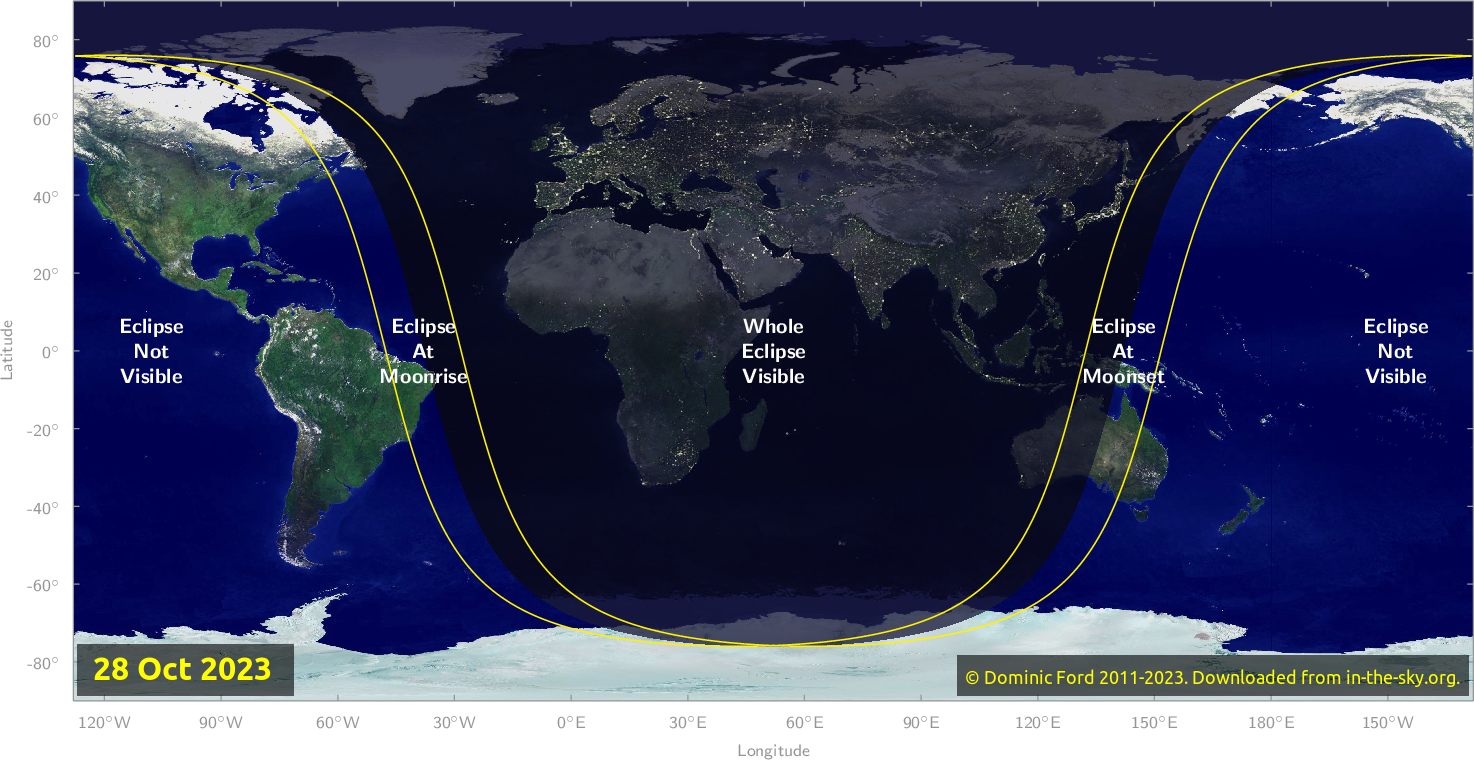Watch the partial lunar eclipse of the Full Hunter's Moon on Oct. 28 with these free livestreams
There are a number of ways you can watch the partial lunar eclipse this weekend, both in person and online.
The moon will pass into Earth's shadow this weekend, creating a partial lunar eclipse.
A partial lunar eclipse occurs when the moon, Earth and the sun are aligned in such a way that a portion of Earth's shadow falls across the face of the moon. The partial lunar eclipse will begin on Saturday (Oct. 28) and will be visible from much of the Eastern Hemisphere, including Africa, Europe, Asia and parts of Australia. The eclipse will not be visible from the Americas, although the eastern coast of Brazil might catch a glimpse of some of it at moonrise.
If you're out of the path of the eclipse or are unable to get outside to watch it, you're in luck: You can watch it here at Space.com, thanks to one of the livestreams we've assembled to let you watch the partial lunar eclipse on Oct. 28 from the comfort of your own mobile device or computer.
Related: Don't miss a partial lunar eclipse of October's Full Hunter's Moon this week
Where to watch in person

Want to see the moon up close? We recommend the Celestron Astro Fi 102 as the top pick in our best beginner's telescope guide.
From London, the moon will rise in the eastern skies around 1727 GMT (1:27 p.m. EDT). The eclipse will begin around 1801 GMT (2:01 p.m. EDT) on Oct. 28 when Earth begins to enter the outer part of the moon's shadow, known as the penumbra. Things will get more exciting around 1935 GMT (3:35 p.m. EDT) when Earth's umbra, the darker, inner part of its shadow, begins to cover the lunar disk.
The eclipse will peak around 2014 GMT (4:14 p.m. EDT) as Earth's umbra covers the largest portion of the moon during this partial lunar eclipse.
The Earth's shadow will then begin to move back off the lunar disk, and the eclipse will end at 2226 GMT (6:26 p.m. EDT) as the moon fully emerges from our shadow.
Breaking space news, the latest updates on rocket launches, skywatching events and more!
Partial solar eclipse livestreams
There are multiple ways to watch the partial lunar eclipse online, including here at Space.com. We will update this list when/if more livestreams become available.
Timeanddate livestream
Skywatching website timeanddate.com will be livestreaming the partial solar eclipse on its YouTube channel beginning at 3 p.m. EDT (1900 GMT) on Saturday. You can also track the eclipse live with real-time progress updates on timeanddate.com.
Virtual Telescope Project livestream
Astronomer Gianluca Masi of the Virtual Telescope Project near Rome, Italy will host a free telescope livestream of the partial lunar eclipse on the project's YouTube channel and website. The livestream will begin at 3 p.m. EDT (1800 GMT) on Saturday.
Viewing and photographing the moon
If you're hoping to catch a look at the moon during the partial eclipse (or any other time!), our guides to the best telescopes and best binoculars are a great place to start.
And if you're looking to snap photos of the moon or the night sky in general, check out our guide on how to photograph the moon or how to photograph a lunar eclipse, as well as our best cameras for astrophotography and best lenses for astrophotography.
Editor's Note: If you snap an image of the partial lunar eclipse and would like to share it with Space.com’s readers, send your photo(s), comments, and your name and location to spacephotos@space.com.

Brett is curious about emerging aerospace technologies, alternative launch concepts, military space developments and uncrewed aircraft systems. Brett's work has appeared on Scientific American, The War Zone, Popular Science, the History Channel, Science Discovery and more. Brett has degrees from Clemson University and the University of North Carolina at Charlotte. In his free time, Brett enjoys skywatching throughout the dark skies of the Appalachian mountains.


